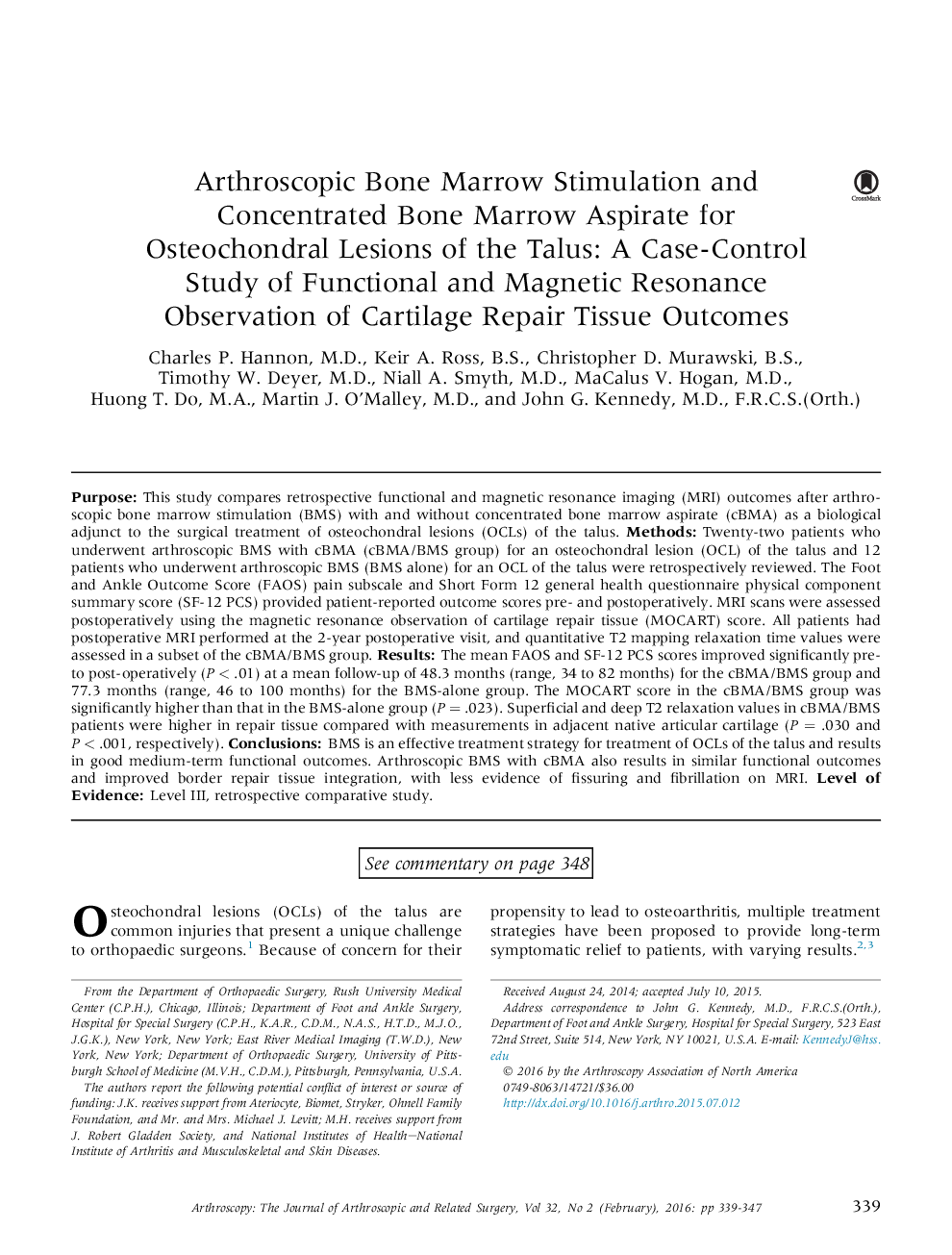| کد مقاله | کد نشریه | سال انتشار | مقاله انگلیسی | نسخه تمام متن |
|---|---|---|---|---|
| 4042319 | 1603474 | 2016 | 9 صفحه PDF | دانلود رایگان |
PurposeThis study compares retrospective functional and magnetic resonance imaging (MRI) outcomes after arthroscopic bone marrow stimulation (BMS) with and without concentrated bone marrow aspirate (cBMA) as a biological adjunct to the surgical treatment of osteochondral lesions (OCLs) of the talus.MethodsTwenty-two patients who underwent arthroscopic BMS with cBMA (cBMA/BMS group) for an osteochondral lesion (OCL) of the talus and 12 patients who underwent arthroscopic BMS (BMS alone) for an OCL of the talus were retrospectively reviewed. The Foot and Ankle Outcome Score (FAOS) pain subscale and Short Form 12 general health questionnaire physical component summary score (SF-12 PCS) provided patient-reported outcome scores pre- and postoperatively. MRI scans were assessed postoperatively using the magnetic resonance observation of cartilage repair tissue (MOCART) score. All patients had postoperative MRI performed at the 2-year postoperative visit, and quantitative T2 mapping relaxation time values were assessed in a subset of the cBMA/BMS group.ResultsThe mean FAOS and SF-12 PCS scores improved significantly pre- to post-operatively (P < .01) at a mean follow-up of 48.3 months (range, 34 to 82 months) for the cBMA/BMS group and 77.3 months (range, 46 to 100 months) for the BMS-alone group. The MOCART score in the cBMA/BMS group was significantly higher than that in the BMS-alone group (P = .023). Superficial and deep T2 relaxation values in cBMA/BMS patients were higher in repair tissue compared with measurements in adjacent native articular cartilage (P = .030 and P < .001, respectively).ConclusionsBMS is an effective treatment strategy for treatment of OCLs of the talus and results in good medium-term functional outcomes. Arthroscopic BMS with cBMA also results in similar functional outcomes and improved border repair tissue integration, with less evidence of fissuring and fibrillation on MRI.Level of EvidenceLevel III, retrospective comparative study.
Journal: Arthroscopy: The Journal of Arthroscopic & Related Surgery - Volume 32, Issue 2, February 2016, Pages 339–347
